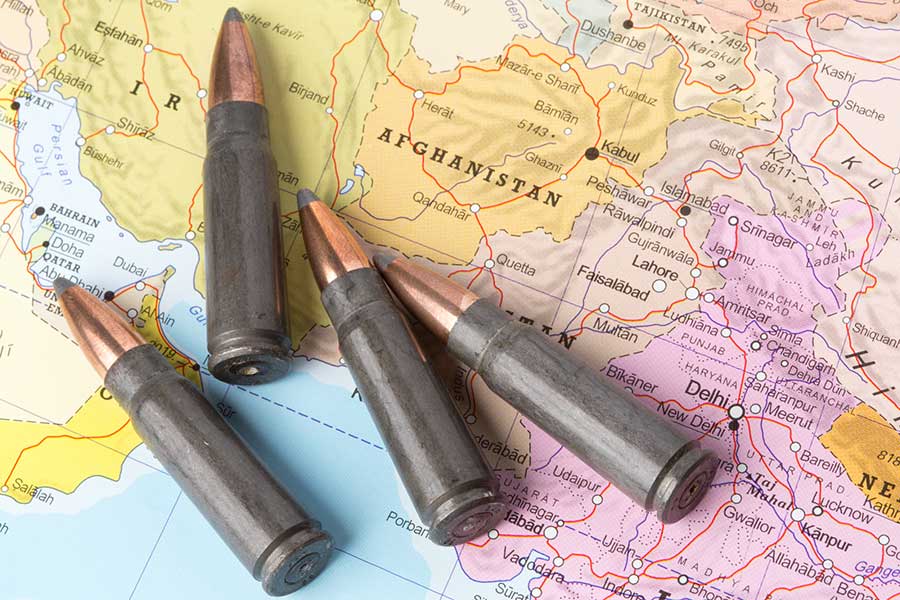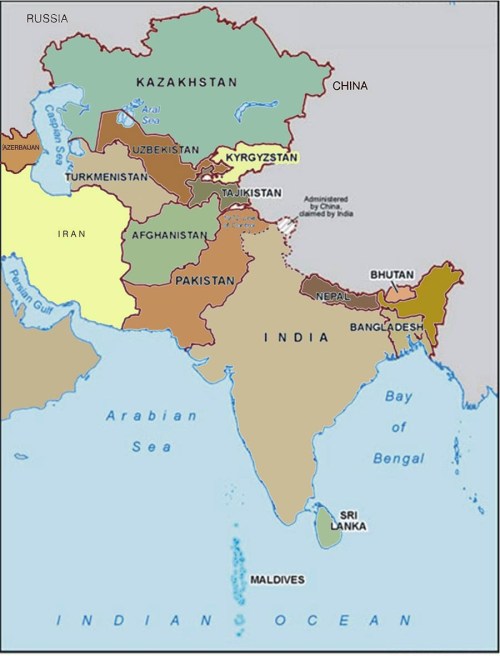The US Military Is Set to Withdraw from Afghanistan On September 11. What Happens Next?

Op/Ed by Chris Devonshire-Ellis
- Why the Afghanistan Peace Process is Vital to China’s Belt & Road Initiative
- Breakdown in peace talks leave China, Russia, India & Pakistan picking up the pieces
- China trade deals with Iran and Saudi Arabia part of the process
- At stake is the future of Central Asia
Sergei Lavrov; the Russian Foreign Minister, has been visiting New Delhi and Islamabad this week, discussing trade, as well as the settlement of the Afghan Peace talks. This has occurred just two weeks after he met with China’s Foreign Minister Wang Yi in Beijing.
Top of the agenda in all these talks was the Afghanistan Peace process, coming as violence in the country is increasing and with a fast-approaching US deadline of September 11 for Washington to withdraw the American military from the country. The stakes are high – the United States ostensibly wants its troops back home, while China and Russia want to reconnect Central Asia with South Asia in what China refers to as the Belt & Road Initiative and Russia ‘The Great Eurasian Partnership‘.
Doing so will be tough. Both China and Russia want to reduce the threat of Islamic fundamentalism in the region, with differing, hard core Islamic factions such as ISIL and the Taliban fighting for control. The paradox when wanting to open Central Asian interconnectivity is that better transportation infrastructure and freer movement across borders assists the spread of both trade – and religious violence. China is facing pressure with the possibility of Islamic fundamentalism spreading among its 14 million Uyghurs, while Russia has long experienced border security problems and terrorist violence exported to its primary cities as has happened in Moscow and St. Petersburg. China knows full well that Beijing and Shanghai could be next.
The trade and security aspects therefore need to be managed. Both China and Russia realize that creating wealth and business opportunities result in a reduced likelihood of citizens resorting to religious extremes. Yet at the same time, cultural and religious sensitivities abound.
Afghanistan itself sits in a key area of Central Asia – it is the long-admired corridor between East and West, of the Highlands and the Ocean, and Central and South Asia. Unlocking its borders can release its potential, create stability through its mineral wealth, and settle the region down. The impact of doing so would be felt across Eurasia and be a boom to other landlocked Central Asian countries such as Uzbekistan, Kyrgyzstan, and Tajikistan.
Afghanistan, Kyrgyzstan, Tajikistan, and Pakistan share a collective 2,208km border with China, which to put into perspective is nearly double the length of the Californian coastline.
However, nearly a year after Washington signed a troop-withdrawal deal with the Taliban that called for a reduction in violence by all sides, attacks by the group have escalated, according to General Scott Miller, the head of U.S. forces and the NATO-led non-combat Resolute Support mission.
The main problem is that the national Afghan military is seen as a ‘puppet’ of foreign powers, and negotiations with the Taliban, held in Doha have now failed, with Taliban leaders leaving Qatar.
Dealing with the Taliban has proved difficult. It is listed as a terrorist organization in the United States, Russia, China, and India, but not in Pakistan, where much of its funding is believed to originate from. China, with significant investments of US$62 billion in the China-Pakistan Economic Corridor (CPEC) will want to see that stopped. Iran has also previously been noted as a sponsor of Taliban related activities, yet China appears to have blocked that off by agreeing a US$400 billion investment spend in Iran over the next 25 years.
The Afghanistan Government also signed off an agreement to build a Trans-Afghan railway that would connect the Uzbek capital of Tashkent with Kabul, traverse Afghanistan though Jalalabad and continue through to Peshawar in Pakistan before heading south to the Gulf Ports of Karachi and Gwadar with access to the Arabian Sea and Indian Ocean.

Meanwhile, ISIL (the Islamic State) also presents a threat. It represents a different, and even more violent form of Islam than the Taliban, while claiming authority over all Muslims. ISIL are purported to be funded by Saudi Arabia and Qatar, both US friendly client states. The fourth pillar then in controlling the finance of regional terrorism lies with Washington and its ability – or not – to put pressure on Saudi Arabia. The fact that Saudi heir apparent Mohammed bin Salam did not face US sanctions despite the apparent murder of the Washington Post journalist Jamal Khashoggi is perhaps indicative of the actual steps the US is prepared to take to reel in ISIL financing. If so, then the US position remains a weak spot in resolving the Afghan question.
China though has already tried to negate American unwillingness to get involved. Wang Yi, China’s Foreign Minister, visited Saudi Arabia two weeks ago and it seems highly likely the question over continuing Chinese infrastructure support and oil purchases were linked to requests concerning covert ISIL financing and the desirability for peace in Afghanistan.
There is also the May 1 troop withdrawal deadline, by which the US military has stated it will exit Afghanistan. At present, it seems that deadline will not be met. The Taliban meanwhile appear to be gearing up for a new spring offensive, with fears this will become increasingly violent and lead to a four-sided civil war in Afghanistan; with the Taliban, ISIL, the Afghan Military, and the US military all involved.
The United States needs to decide what its intentions are. Is Washington really prepared to exit Afghanistan, or does it prefer to continue to be weak with its Arabic clients and turn a blind eye to ISIL? Does it, in truth wish to prolong the Afghan conflict as it prefers not to see a combined Russia and China dominate Central Asia? Keeping the Afghan conflict alive also serves the purpose of keeping China and Russia busy and occupied, with military and other resources having to be committed to keeping the peace in a huge region. That might be to Washington’s advantage in its policy of containing China and Russia.
At present, it appears that China has done its bit with agreeing significant regional investment with Pakistan and Iran. India is on-board with an eye on picking up the trade benefits and keeping the export of violence into India at bay. Russia is the same yet has even greater diplomatic and political clout. The fourth player is the United States. If pressure can be placed on Saudi Arabia to cease covert funding, then the Afghanistan peace agreement may reach easier grounds for optimism.
The dreams of connecting Central Asia with South Asia can then start to come into being. The question for the United States therefore is how much does it really want to stop China and Russia develop the Belt & Road Initiative into Central Asia, and continue to keep its troops on the ground to actively prevent it? We will have some indication by September. After all, having been there since 1999, it must feel like being at home.
The subsequent issue then becomes whether Russia, China, India, and Pakistan can settle the Afghan peace agreement on their own. If they can, which also means shutting off terrorist financing from Saudi Arabia and Iran, it will be a major diplomatic coup and lead the way to settlement.
The price however may well be a joint China-Russia-Pakistan military peacekeeping force – the exact type of military cooperation that Washington has said it does not want to see develop. One hopes that Wang and Lavrov’s solid and largely unrecognised diplomatic efforts will ultimately prevail.
This article has been amended to reflect the latest withdrawal date indicated by Washington from May 1 to September 11, 2021.
Related Reading
- India and Russia To Connect Supply Chains Via Iran’s INSTC
- Uzbekistan Looks To China’s Belt & Road And Pakistan’s CPEC To Connect Through To Gwadar & Karachi Ports
About Us
Silk Road Briefing is written by Dezan Shira & Associates. The firm has 28 offices throughout Asia, and assists foreign investors into the region. For strategic advisory and business intelligence issues please contact the firm at silkroad@dezshira.com or visit www.dezshira.com





